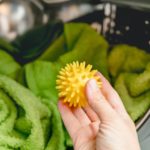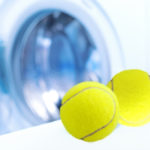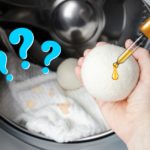Tumble dryer balls have been around for a long time now, but it’s only in recent years that they have slowly been gaining popularity. Yet despite this recognition, many people are unsure what these dryer balls actually do.
To begin with, throwing a few balls into your tumble dryer with the rest of your laundry may seem mad. Once you understand their use, though, these seemingly unremarkable dryer balls suddenly become a worthwhile investment.
So what do tumble dryer balls do? How do they work? And how can you include them in your laundry routine? Read on for our detailed guide.
What Are Tumble Dryer Balls?
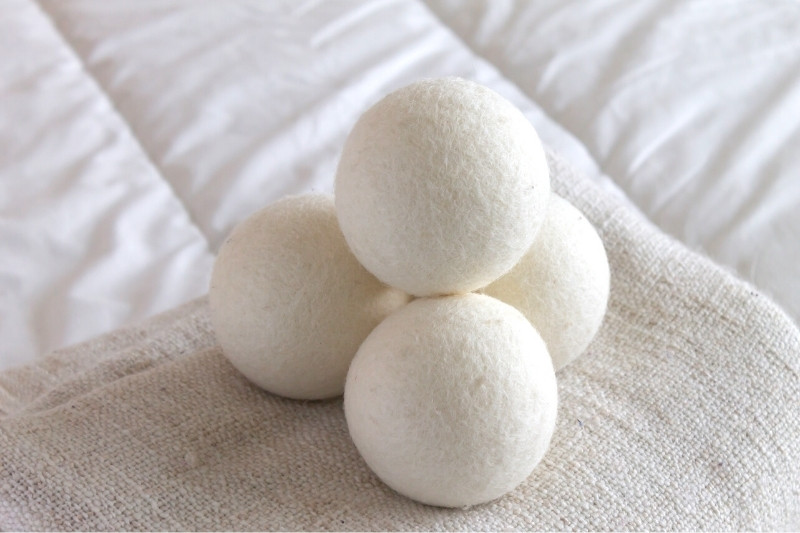
Tumble dryer balls are an eco-friendly alternative to fabric softener or dryer sheets. Much like these well-known products, dryer balls work to:
- Soften clothes as they dry
- Reduce wrinkles
- Prevent static cling
However, unlike traditional fabric softener, this alternative can be reused thousands of times.
These balls also help speed up the drying process. Not only does this reduce the amount of time you’re waiting for clean clothes, but it also saves energy and may help lower your electricity bills.
What Are Tumble Dryer Balls Made of?

Although tumble dryer balls are most commonly made of tightly compressed wool, they can also be made of other materials, such as plastic and rubber. They each come in a variety of different sizes, suitable for a range of appliances and washing loads.
Each type of tumble dryer ball has its advantages. For example, wool dryer balls are the quietest kind to use but can cause problems for those with wool allergies.
In comparison, plastic dryer balls last longer and are ideal for those with sensitive skin, but they can make a lot of noise in the dryer.
The material your tumble dryer balls are made from also impacts its ability to speed up the drying process, all you’ll learn below.
How Do Dryer Balls Work?
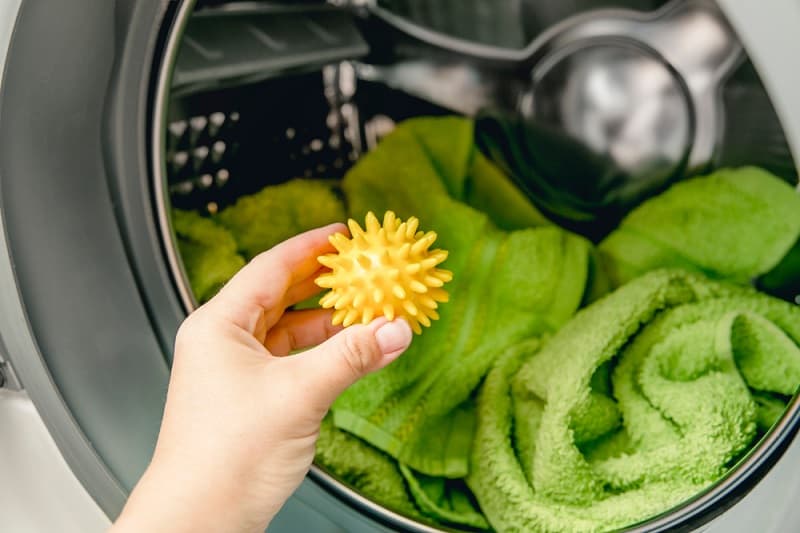
Tumble dryer balls are useful because they mimic the effects that fabric softener has on clothes without the need for chemicals. They also have the additional benefit of speeding up the drying process.
To have these effects, the dryer balls interact with your clothing in three main ways:
- Separation: When clothes are spun in the dryer, they have a tendency to clump together. Dryer balls prevent this from happening by moving between the clothing and separating the fabric. This allows the air to circulate better (thereby reducing drying times) and reduces friction between the fabric (preventing static cling).
- Agitation: While moving between your clothing and separating the fabric, dryer balls also work to agitate the fibres throughout the drying cycle. This is what helps soften your clothing and reduce the appearance of wrinkles.
- Absorption: The last role of dryer balls is to absorb some of the moisture from your clothes. This both speeds up the drying process and helps to keep the air in the dryer damp and static-free. However, this only occurs when using wool balls, as plastic and rubber are not absorbent materials.
How to Use Dryer Balls

If you’ve decided to give dryer balls a go, then you’re in luck: They are incredibly easy to use! Simply place the balls into your dryer at the start of your regular drying cycle and let them work their magic.
Perhaps the most challenging part about using dryer balls is figuring out how many you need to use for each load of washing.
Typically, you will need between two and six balls depending on the size of the dryer balls and washing load.
Smaller balls and larger loads will need more dryer balls, whereas bigger balls and smaller loads will need less.
Some other useful tips include:
- Essential oils: When using wool balls, it is also possible to scent them using essential oils if you want your clothing to be fragranced. You can do this by adding a few drops of your desired oil onto each ball a few hours before using them in the dryer. However, be aware that this can be a fire hazard, so use this tip at your own risk.
- Moistening & safety pins: You can spray wool dryer balls with water before adding them to the dryer (to increase moisture levels in the machine) or attach a safety pin to the side of a ball. These tricks will help to boost the dryer ball’s ability to reduce static cling. However, if wetting the balls to increase moisture, they won’t have as much impact on drying speed.

Hannah has a passion for cleaning. She worked her way around Australia by cleaning hostels in exchange for free accommodation and used her cleaning skills to bag a job as a chalet host for a luxury ski company in France.

